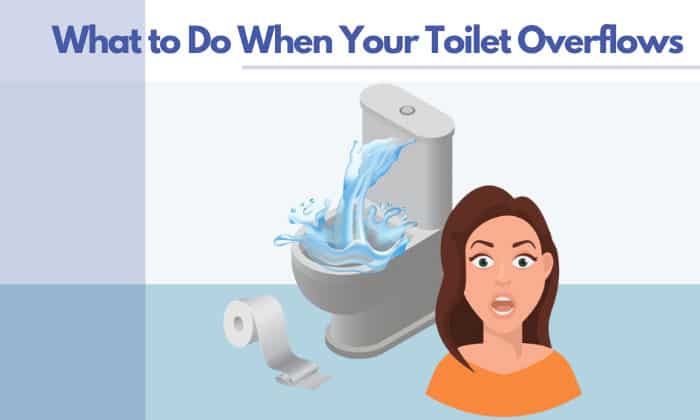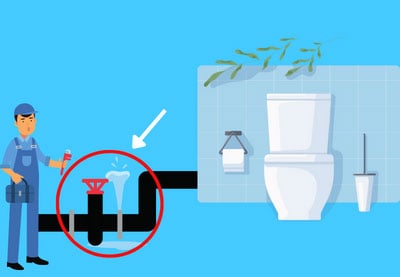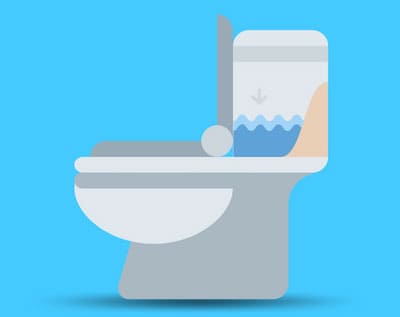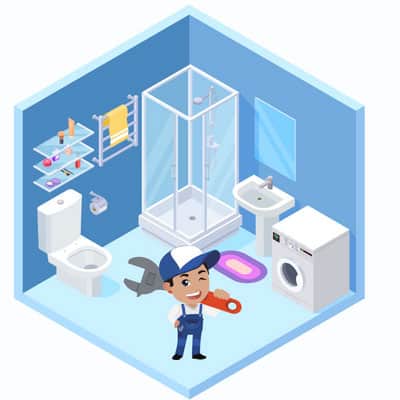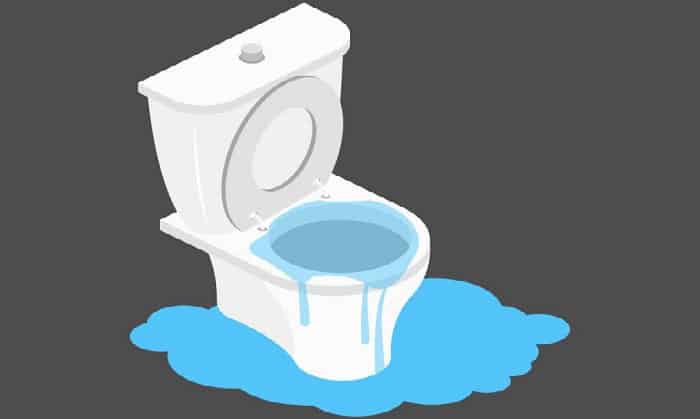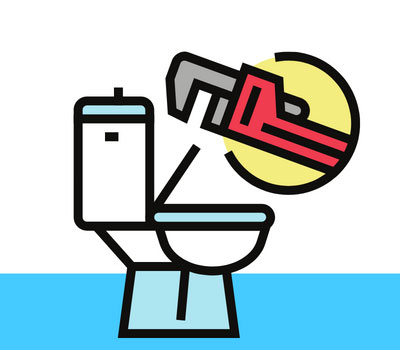Nothing is more panic- and stress-inducing than toilet water flooding your bathroom floor. It is messy, unsanitary, and possibly stinky. Just the sight of it will hassle anyone, for sure.
Although it seems burdensome, here is an easy guide to getting rid of this stinky mess. Learn what to do when your toilet overflows as well as some common reasons why it happens.
Keep the following steps in mind to avoid getting overwhelmed when a toilet keeps overflowing:
Table of Contents
Step-by-Step to Do When Your Toilet Overflows
1. Do not flush
Panic may set in, and you would think that flushing can help the water level go down like it normally does when we use the toilet daily.
But continuously rising water levels mean that there could be clogs blocking the normal flow of water in your drain pipes. This will eventually cause overflowing. With this, if your toilet overflows already, the last thing you want to do is to introduce more water.
2. Control the toilet’s water source
To completely avoid having additional water flow into your toilet, turn off the following toilet functions: water shut-off valve, flapper, and float.
The water shut-off valve, attached to the wall near the toilet’s base, controls the source of water to be stored in the tank. Crank this valve clockwise to cut off the water supply.
The flapper, located inside the tank, controls the flow of water from the tank to the toilet bowl when flushing. Make sure this rubber circle is closed and sealed to prevent the exit of water.
Lastly, the float acts as a signal whether the tank is still filled or already out of water. Tie or rig the float to ensure the fill valve is closed and no additional water will be supplied to the tank after flushing.
3. Reduce water level in toilet bowl
Now that the water source is under control, the next step would be removing excess water from bowl. Scoop out water to prevent another overflow occurrence.
This will also be a preparatory step when you try to unclog your toilet for possible blockages.
Read more: Ways to adjust water level in a toilet bowl.
4. Dry floor and pick up any debris
Make sure that your work area is safe while you fix an overflowing toilet by starting to clean your floorings and removing possible debris as soon as possible.
If there are only small amounts of water, then towels or rugs will be enough to dry the floor. But if the flooring becomes flooded with toilet water, or it splashes and soaks onto carpet, consider using a wet vacuum.
There are instances when the toilet overflows onto floor with the expelled water coming with few solid debris – soaps, toys, sanitary items, and very unfortunate if it comes with poop.
5. Disinfect and sanitize
Of course, only removing the debris and water from your flooring will not be enough. It is important to sanitize after toilet overflows in preparation to fix a flooded toilet.
It’s best to use commercial cleaning products so that adequate antibacterial strength is guaranteed. Choose which product is compatible with your floor type to avoid damage.
6. Clear the possible clogging
To finally stop a toilet from overflowing, address the possible issue your toilet has. Commonly, it is clogging within the toilet drain pipes.
Using the good old plunger first, try to dislodge the thing that may have been blocking your toilet’s normal flow. Pump with force to ensure effectivity.
You may also try unclogging without a plunger by using these other methods, whichever is more accessible to you: toilet auger or drain snakes, baking soda + vinegar, commercial cleaners in worst cases, and many others.
After you have successfully unclog an overflowing toilet, cleaning and disinfecting its surfaces should be done on the toilet bowl mainly.
7. Test for functionality
Switch on the toilet’s water valve, unseal the flapper, and untie the float so that the toilet can function again normally. Flush the toilet and see if it now drains properly.
Ideally, your problem of a toilet overflowing when flushed should be gone by now. If this problem seems to be persistent after all these efforts, it’s best to seek professional help.
What Causes the Toilet to Overflow?
As mentioned, clogging is a common reason why your toilet randomly overflows.
Aside from this, a blocked vent pipe and a float set too high can also be the culprits behind this messy situation.
Blockages in your drain pipes disrupt the normal movement of toilet water. Tissue papers, sanitary products, soaps, and toys are some of the usual toilet obstructions.
Such clogging prevents wastewater from being flushed down. Hence, water fills up the bowl until it overflows.
When your toilet overflows but not clogged, then the vent pipe could be blocked. This causes disruption in the normal airflow within the toilet pipes, leading to difficulties in flushing down the toilet properly.
Another reason a toilet may overflow without being clogged is when a filler float is set higher than normal, causing the supplied water level to be higher.
Tips to Prevent Toilet Overflow in the Future
Here are a few things to keep in mind to avoid another incidence of toilet overflow:
1. Do not flush foreign objects into the toilet
Only human wastes are safe to flush into the toilet. Even toilet papers cause clogging, eventually. More so, sanitary items, soaps, diapers, and even toys are a big no for your drain pipes.
2. Avoid flushing consecutively
As mentioned earlier, fight the urge to re-flush your toilet when you observe that the water level is not going down properly.
There’s a big chance that your toilet is clogged, and additional water from flushing will only worsen the situation. Try plunging the bowl as soon as you suspect clogging.
3. Monitor the flapper and float
These two toilet functions control the entrance and exit of water stored in the toilet tank. The toilet’s old age can lead to problems in efficiently controlling stored water levels.
And like any other components, the flapper and the float are prone to wear and tear. Their performance could eventually be suboptimal. Monitor these two and replace them if necessary.
4. Limit the use of chemical drain cleaners
Although commercial drain cleaners are marketed as safe and effective, overuse of these cause your drain pipes to incur permanent damages.
Such drain cleaners make use of highly corrosive chemicals that are effective in dissolving objects clogging the toilet, but can possibly corrode metal pipes in the process.
Conclusion
Cleaning an overflowing toilet is undoubtedly a tasking and messy chore. It is indeed a panic-inducing situation where you would wish there is an easy way out.
Fortunately, we have shared to you what to do when your toilet overflows. Additionally, we have laid out the common reasons and some preventive measures so that you can fully understand the problem at hand.
Follow this systematic guide to prevent another incidence of this messy bathroom mishap.

I’m Paulk Webb, and I work as a writer for Saveourwaterrebates. I’m happy to put in the time and effort to conduct market research to identify the most pressing issues faced by households concerning their plumbing. Feel free to check out our guides to get the most informed recommendations for how to solve your problems.


